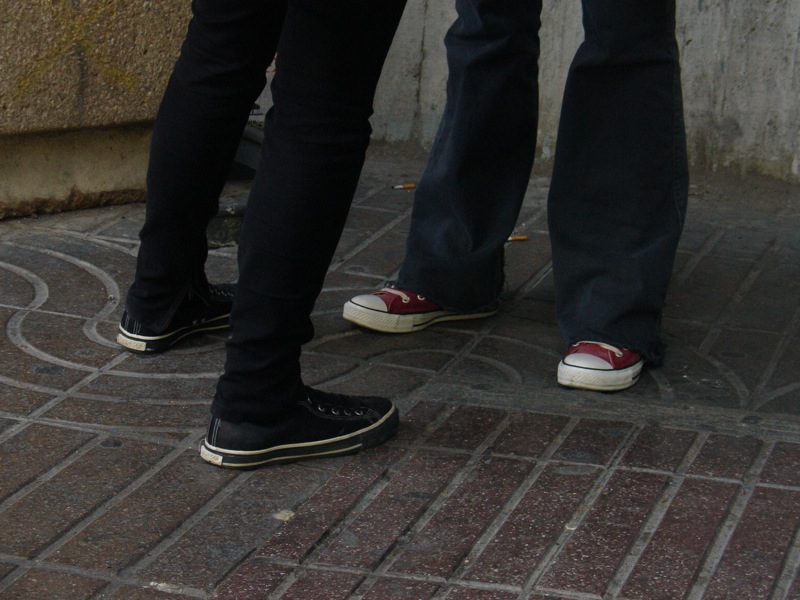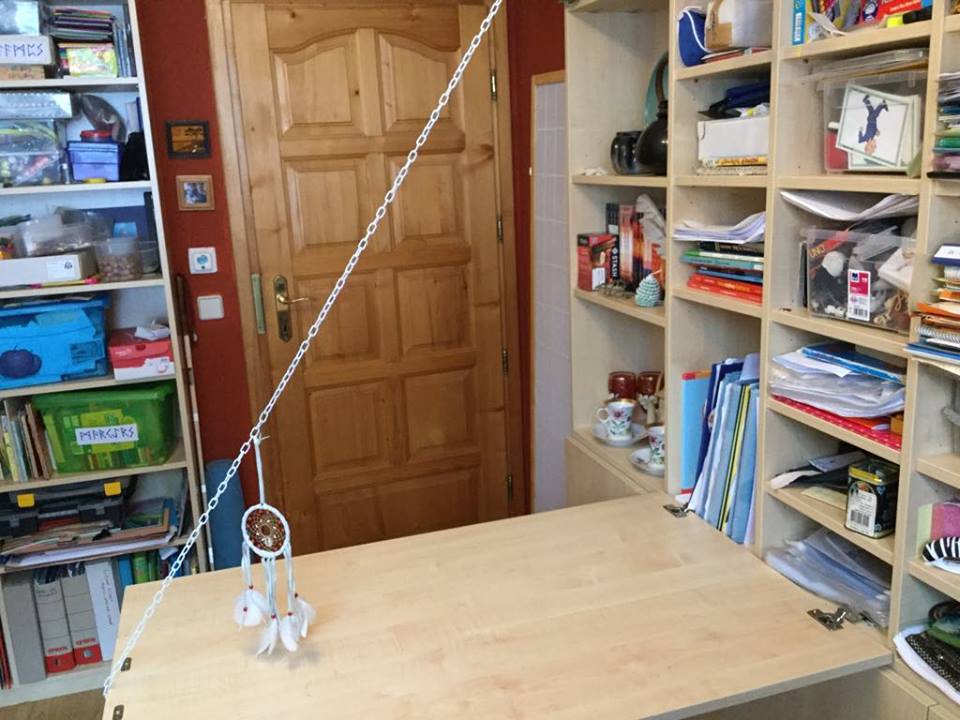Fighting fascism: Democracy doesn't come easy
/The rallies and marches for democracy across the United States on April 5 were absolutely amazing!
Consider what it takes for 5.2 million people to gather in public places in crowds at the same time, and have almost no incidents of disruption. There were counterprotests and MAGA provocateurs specifically trying to incite trouble, both in big cities and in small towns like ours.
But in almost all cases the organizers of the rallies and marches calmed these situations, using hard-won, conflict-mitigation techniques that many of us have been practicing for decades. In just our little town in Eastern Oregon, we put together a team of eight people tasked with keeping our crowd of 300 people calm and avoiding engagement with counter protesters. We had another team of just four people discouraging people from crossing streets against the lights. This was hard work, but people in the crowd listened to us, and we pulled it off without any incidents or injuries.
Even here, there were MAGA supporters who turned out with open-carry guns and large trucks burning tires to try to intimidate or provoke conflict. One driver sped through a crowded intersection and put many people at risk, but because of our careful traffic group, no one was in the street when they weren’t supposed to be, so no one was hurt. Another time, a driver forced their way onto a crosswalk against the light, while people who had the right-of-way were crossing. Our people stayed calm.
If this happened in a tiny, rural town, I can only imagine what it was like in larger cities, like New York, where crowds filled major avenues for 20 blocks and the police were largely absent. It was all on volunteers to keep the cross streets flagged and avoid traffic accidents. This isn’t simple. It takes training, and it didn’t happen overnight. This took huge coordination and a ton of hard work by thousands of volunteers.
And we’re going to have to do it again and again. This is not even close to over. We’re standing on one of those knife-edges of history. The United States will go fully fascist or it won’t. Even if we are headed for an authoritarian period, will there be lively community resistance or an intimidated and lethargic populace too beaten down by economic blows to push back? Those are the questions of our times.
As a journalist, I got to witness pivotal moments like this for some other countries, seeing some countries get sucked into totalitarian regimes and seeing others gain health care, stronger democratic systems and better safeguards than we have in the US. I’ve known for decades that American democracy was under threat and that we are not immune to coups or authoritarian tactics.
anti-fascist protest - image by Arie farnam
The philosophy of American exceptionalism has been a problem when it comes to the US doing military things overseas that we wouldn’t want other countries doing. But it’s also a problem when Americans think we won’t ever have coups or wars or authoritarianism because we are the definition of democracy. We don’t have a special destiny to be the greatest democracy. We have to fight for our democracy like everybody else.
Europe and Canada do have better health care, stronger democratic systems, better safeguards and less inequality, largely because they have updated their laws to face modern threats to democracy, such as massive corporations, billionaires and AI engines that can manipulate what people see on the internet. If we want to have what they have, save our democracy, prevent full-blown fascism and take back our country, we must accept that we are not immune or destined to be a great democracy.
We are now in a historic struggle for democracy. It will necessarily have many facets. Economic boycotts that target companies complicit in authoritarianism and abuses of democracy and human rights are part of it. Organizing, running for office, showing up to talk to legislators, as well as calling and writing to politicians will play a role. There may come a time when we can muster a general strike, the type of thing that has brought an end to political coups in other countries.
But massive demonstrations are still the backbone of a pro-democracy resistance to authoritarianism. Public events like this “demonstrate” undeniably the numbers of people who are willing to make personal sacrifices and take risks to demand rights and democracy. They also form community bonds.
The mainstream media tends to downplay demonstrations as merely “a way to send a message” to leaders, as if they are nothing more than another form of calling your representatives. But public rallies and marches do more than send a message and the message they send is more than the one most people think they are sending. It isn’t just about telling politicians, “please do X, Y and Z and stop doing A, B and C.” Many people may say these things in the crowd and be quoted as such in newspapers. That’s good and important. But the greatest message being sent—the message that can’t be denied with lies and spin—is the level of commitment the population has to broad topics or issues.
Extinction Rebellion made a big deal out of a statistic about 3.5 percent of the population rising up and that concept has spread to other protest movements today. The idea is that historically there is no instance in which more than 3.5 percent of the population became highly activated against a regime or for a major change and change did NOT come. Some people have taken this to mean that a small minority of the population could force a change, even on a recalcitrant majority. But that isn’t really what the statistic means.
The 3.5 percent is an estimate of what percent of a population has to be willing to go out to public rallies and protests regularly, especially in the face of repression, especially if it is dangerous or costs them inconvenience or risk. It is not because that 3.5 percent can change things all on their own. It is what those gatherings “demonstrate” about the level of commitment and vehemence in the population.
The US population has overwhelmingly supported progressive policies for decades. A significant majority of Americans have supported gun control, universal health care, education, reproductive rights and all kinds of other progressive policies for as long as I can remember. Those policies have not become law because of the anti-majoritarian elements of the US electoral system (such as the electoral college, gerrymandering and "lobbying” aka legalized bribery) as well as because of the corporate sponsorship of the two major parties.
Despite majority opinion being significantly at odds with policy for decades, no shift has come for a wide variety of reasons—lack of awareness, media obfuscation, apathy and hopelessness, prominent among them.
In addition, the population may hold those majority opinions but many people may not hold them strongly enough. Political and social scientists look at what happens when popular commitment to something rises in a population. When people are willing to make sacrifices or take risks for a set of needs or beliefs, even less democratic systems (such as authoritarian coups) can be overcome. That’s what the 3.5 percent rule is about.
And we are well on our way to seeing 3.5 percent or more of the population become engaged. But it isn’t enough for that number of people to come to one demonstration. It will require a longer commitment. It will require sacrifice and risk, because that would mean that a large majority of the population agrees with those who are out demonstrating, not just sort of agrees, but agrees vehemently and that more and more people are willing to lay down personal stakes to make a change. That is when even a less-than-democratic regime will change, whether it wants to or not.
I talk to friends in democratic countries in Europe regularly online, and they are really worried about us. They often say I’d better get out while I can, as if the US is one of those destabilized countries I used to report from. But the reality is that Putin is threatening my second country, the Czech Republic. If Ukraine falls, Europe will be fighting for their lives as much as they did in World War II.
These are the times we are living in—wherever we are. We never wanted it to come to this, but we are facing an authoritarian epoch. There are people being disappeared off the streets in this country for no crime greater than participating in a peaceful protest. Legal immigrants or citizens can officially be rounded up without due process if anyone “suspects” they may be undocumented. There are states where some of my neighbors, who are citizens, have been declared illegal because of medical and gender differences. Our civil service is being gutted and replaced by racist loyalists.
We are facing the fight of our lives.
Last week before the big protests, there was a swarm of messages on social media, claiming to be “urgent safety information” about the protests. But it was actually lists of people who shouldn’t protest because they’d be at risk. This included immigrants—who really are at increased risk and we should be getting out there doubly to stand up for them—but also saying people of color shouldn’t protest, children should never come to protests (even those that are family friendly and have kids’ activities), and that people with any kind of medical condition or older people shouldn’t come to protests.
It became clear that these posts actually weren’t trying to help. They were being spread by some progressive accounts but also by accounts that were usually pro-MAGA. They started to spread things about turning your phone completely off—not communicating with anyone. There are protest strategies for people involved in civil disobedience that entail not using the internet or not even bringing a phone during specific direct actions. But having crowds of people in the streets without a means of communication helps no one but those who want chaos and violence.
In the end, the protests were peaceful and calm across the nation, amazingly so given the numbers. We saw a microcosm of it in our small town, with a few counterprotestors, some people attempting to intimidate. But we were lucky all around, and online reactions showed that local hardliners seriously underestimated the potential of these protests. In Baker County, the next county over, there was a somewhat smaller protest but they had 50, mostly armed, counterprotestors show up, likely because there was an article in their local paper about the protest a few days before.
That tells me that we too will soon face a lot more reactionary response. There are paramilitary groups all over this country, but especially in rural “red” counties like ours, that would like nothing more than to cause disruption and violence at anti-Trump events. We have a lot of work ahead. And there will likely come a time when just protesting isn’t enough. A general strike is a very likely necessity down the road and civil disobedience that entails real risks and personal sacrifices will be necessary if we want real change.
But with these tools and with the level of commitment that is palpable among us, we do now have the ingredients for change, possibly for change that will do more than just reverse the most recent atrocities. We could see change that repairs much more and allows us to truly join the “prosperous and democratic nations” of the world, at last.























